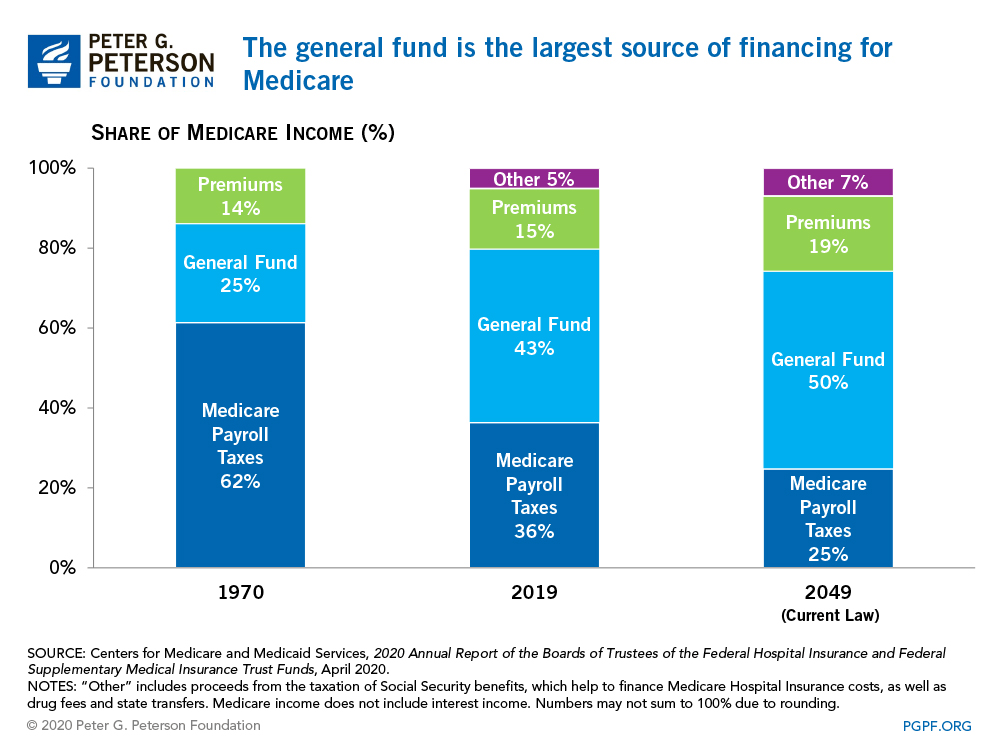We all have some level of reliance on Medicare. Whether you’re retired and on the program, about to move into benefits in the coming years, or are paying into the program on the premise that Medicare will be there for you when your time comes.
However, without significant changes to Medicare, the program as we know it today will not function in the future: the fund that pays for Medicare will not sustain projected spending. To get Medicare in shape for the long term, several changes will need to be considered and potentially adopted. Further, any discussions about expanding Medicare to a broader population, up to and including movements that push for “Medicare for All,” will require substantial innovations and changes to Medicare so that we don’t exacerbate the issues that exist today.
This article lays out the problem and explains some of the devices we can and likely will use to enable Medicare to become more sustainable longer term.
Spending Exceeds Income
It’s a basic paradigm that you can’t spend more than you make. Due to changes in our population demographics (i.e. a great proportion of our population is, or soon will be, Medicare-eligible) and the increased cost of healthcare compared to other verticals of our economy, Medicare’s spending will soon deplete its funding. According to the Federal Government’s own estimates, the Medicare Trust Fund, aka the Hospital Insurance Trust Fund (“HI”), will be depleted by 2026 and will need to draw on other sources for funding.
Reserves as a % of annual cost. HI = Hospital Insurance Fund. OASI and DI are Social Security
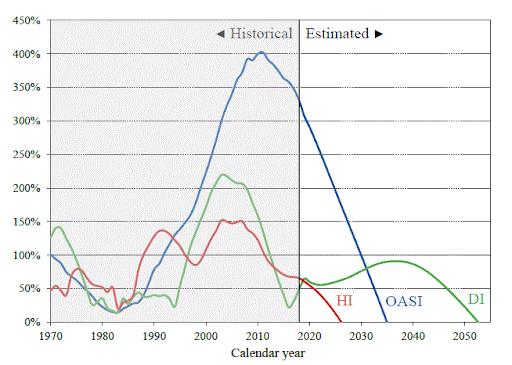
The Levers
There are various reasons this estimate can be off (taxes shift or realized expenditures come in above or below expectations) but major timeline shifts are unlikely without change. What might some of those changes be?
| Lever | Impact | Feasibility | Likelihood |
| Increase Taxes | High | Easy | Possible |
| Reduce Benefits | High | Medium | Unlikely |
| Cut reimbursements | High | Easy | Likely |
| Increase Co-payments | Medium | Easy | Likely |
| Privatize or Alternative Payment Models | Medium | Medium | Likely |
| Transfers from other Programs | Medium | Easy | Likely |
- Increase Taxes – while this may only serve as a bandaid, increasing taxes is one way to preserve Medicare. This could come from increasing taxes on employers or employees. Currently Medicare is funded by a 2.9% of all income and an additional .9% on incomes greater than $200,000. Raising taxes significantly could reduce Medicare’s problem but might also be politically difficult and reduce take home pay.
- Reduce benefits – reducing the benefits under Medicare could come in many shapes and forms but narrowing networks, reducing coverage of services, and changing age eligibility for these programs are all ways to do this.
- Cut the reimbursement amounts of Medicare – the total cost of Medicare can be reduced by cutting how much Medicare pays for benefits. This could come from changing hospital, outpatient, physician, equipment or drug costs. These are all complex maneuvers with lots of actors interested in the outcomes. Drug prices have grown the most as of late with substantial declines in hospital reimbursements and equipment. Drugs will undoubtedly face pressure in the coming years.
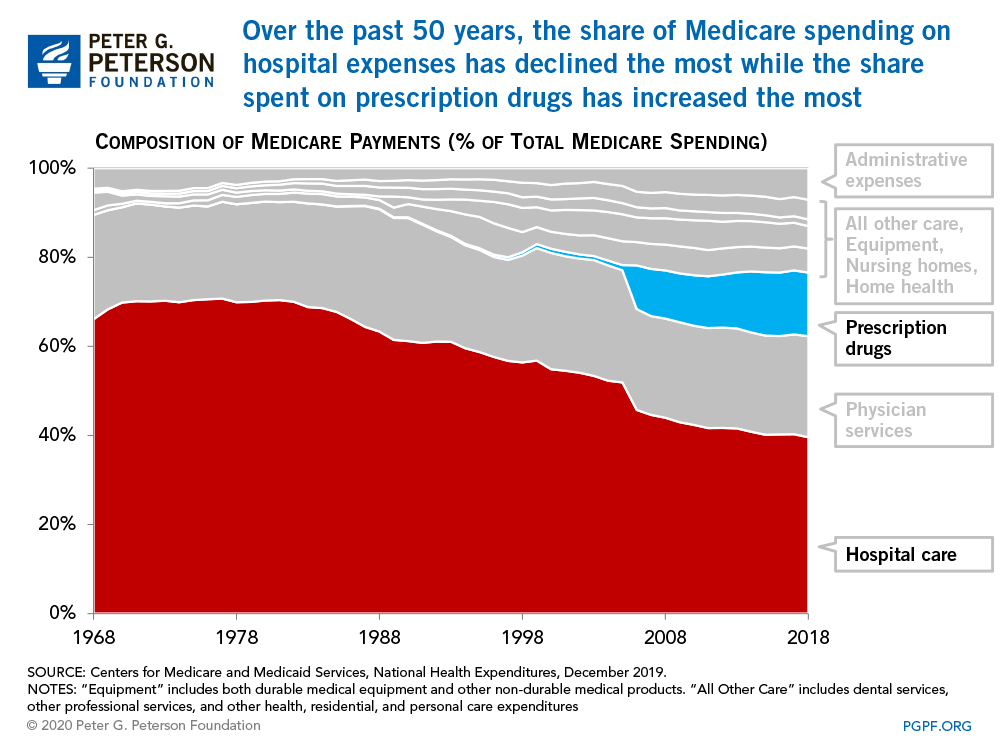
4. Increase co-payments from retirees – putting more of the costs of the program on retirees is another way to make Medicare more sustainable. This has already occurred by increasing the Medicare Part B premiums and increasing deductibles. This trend will likely continue. This approach is ultimately a deferred tax on the program.
Change in Part B Premium Contributions

Source
5. Privatize or adopt other models for savings – Medicare has been working to implement changes and innovations to make Medicare more sustainable. A series of innovations have largely produced limited savings over time. Medicare Advantage, though it has proven attractive to consumers largely for it’s $0 premiums despite narrow networks, has not increased the savings or sustainability of the program. We forecast that there will be continued efforts to develop advanced payment models to help reduce the total cost of Medicare and improve outcomes over time with mixed results.
Cost of Medicare Advantage Relative to Medicare FFS for the US Government
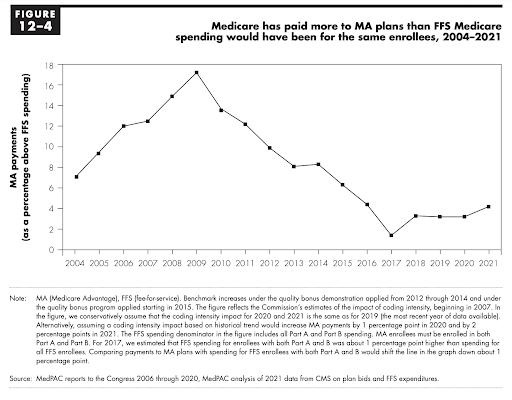
Savings from Alternative Payment Models in Medicare: Voluntary Programs are Generally Unprofitable for Medicare
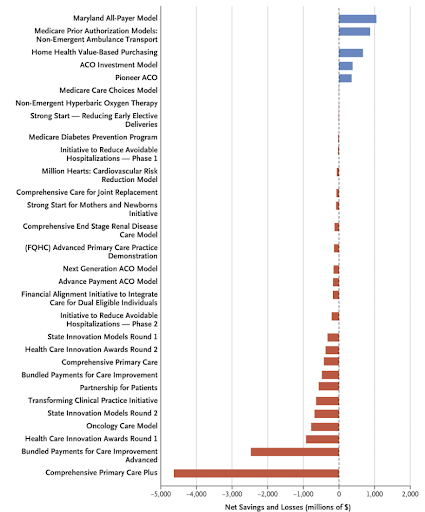
6. Transfer resources from other government programs
At the end of the day Medicare can take resources from other programs. While this can hurt the sustainability of those other programs it is generally permissible and is done at an increasing rate to pay for Medicare.
